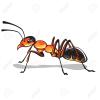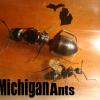I didn't know u could add workers from a different colony to a fertile queen.
Ant Species kept
Temnothorax Longispinosus.-Journal(discontinued)-(formerly)
Camponotus Noveboracensis (formerly)
Camponotus Nearticus-formerly
Tetramorium sp.-formerly
Camponotus Pennsylvanicus Queen & brood.-formerly
Tapinoma Sessile-Journal (3 queen colony)-formerly
Tapinoma Sessile #2 (2 queen colony)-formerly
Aphaenogaster Picea-Journal-active
Crematogaster sp.(Cerasi or Lineolata) Queen with 3 workers and brood-formerly
Crematogaster sp. #2 (Cerasi or Lineolata) Queen with brood-formerly
Formica sp. polygenus-active 300+ workers-active
Formica Subsericea-active 25+ workers-active
Myrmica Rubra 400+ workers 3 queens-active



















